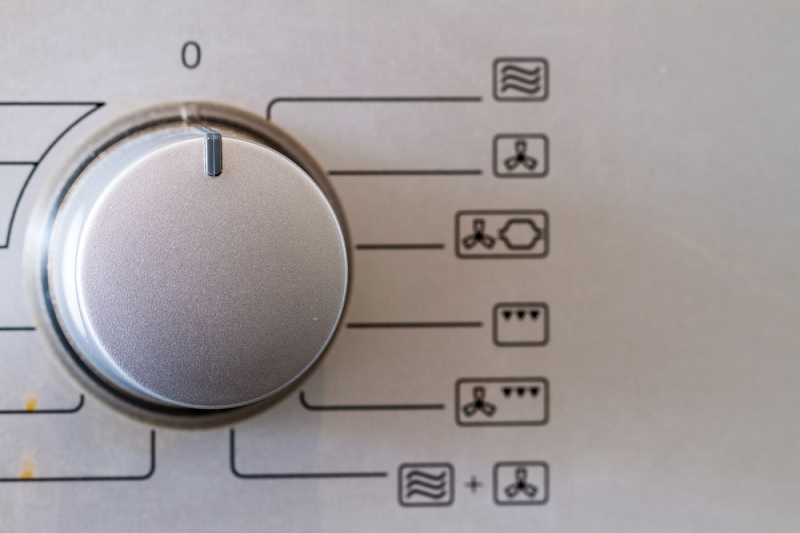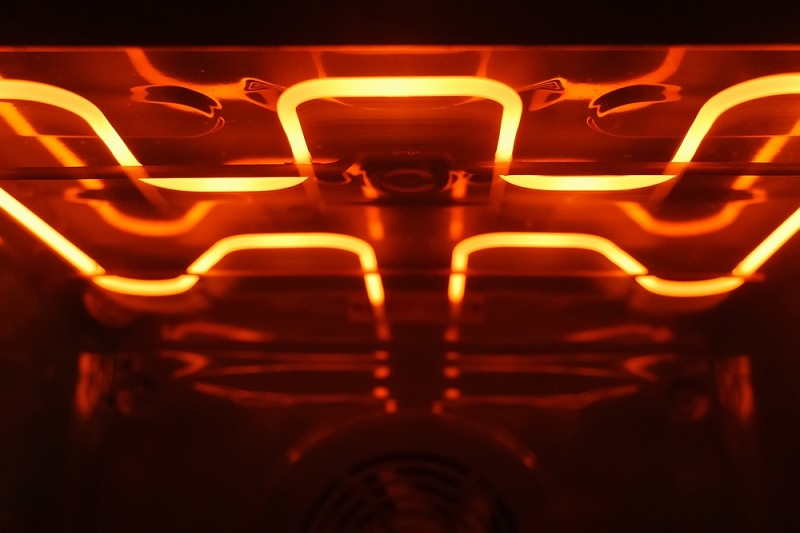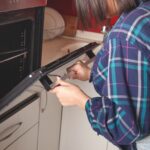Discovering that your oven is not heating up can throw a spanner in your cooking plans. But if your oven has left you in the cold, fear not—with our troubleshooting guide, you will soon be able to bring the warmth back into your kitchen.
We’ll explore all the common issues that might be to blame and step-by-step solutions right here.
By the end, you’ll be armed with insights into power supply, oven controls, oven timers, heating elements, gas supply, ignitors, thermostats, temperature sensors, and the elusive control board, all of which can be responsible for your oven not heating up. Keep reading for all you need to know!
What Can Cause an Oven to Not Heat Up?
There could be several reasons why your oven is not heating up. Here are some common issues and troubleshooting steps you can take to resolve the problem.
1. Power supply issues
Both gas ovens and electric ovens require electricity to function. Electric ovens rely on electricity to power all components, including the heating elements and control panel.
While gas ovens generate their heat using gas rather than electricity, modern gas ovens need power for the ignitors, gas valves, thermostats, and clocks to function.
Therefore, power supply issues could be the reason your oven isn’t heating up. To check that your stove is connected to electricity, follow these troubleshooting steps:
- Make sure that the oven is properly plugged into a functioning power outlet.
- Check for tripped circuit breakers or blown fuses in your electrical panel.
2. Wrong oven controls

Once you have confirmed your oven has power, double-check the oven settings you have selected on your display panel.
In many cases, the reason your oven isn’t heating up is due to no fault in the appliance—it’s due to the user accidentally using incorrect oven settings.
Sometimes, it’s easy to overlook this basic step, especially if you have a multifunctional oven. So, double-check that the following oven controls are appropriate for your cooking needs:
- Ensure that you have set the oven to the desired temperature.
- Make sure you have selected the correct cooking mode (bake, grill, fan, bake, etc.).
- If you have a double oven, check the temperature and cooking mode are turned on for the same oven compartment.
3. Incorrect timer settings
In some ovens (particularly those with advanced features), the timer is crucial in determining when the oven turns on and off. It essentially acts as a scheduler for the oven’s operation.
For example, the timer and clock are involved in the following features:
- Delay start functionality: Many modern ovens have a delay start function that allows you to set a specific time for the oven to begin heating. If the timer is not set correctly, the oven may not start heating until the scheduled time.
- Automatic shut-off: Some ovens have an automatic shut-off feature that turns the oven off after a set period. If the timer is set for a short duration, the oven may shut off before reaching the desired cooking temperature.
- Cooking programs and modes: Certain cooking programs or modes in advanced ovens might be linked to the timer. For example, a timed cooking program may require the timer to be set for the oven to operate.
Therefore, your oven may not heat up if the timer or clock is set incorrectly. Follow these troubleshooting tips to see if the clock/timer could be responsible for the problems you’re having:
- Check that the clock on the oven is accurate and matches the real time.
- Check if your oven has a timer function that might be accidentally set to turn off the heat prematurely.
4. Faulty heating element

Electric cookers have heating elements that are responsible for converting electrical energy into heat.
Most ovens have two heating elements, typically located at the bottom of the oven (bake element) and sometimes at the top (broil/grill element).
These elements glow red when activated, generating the heat necessary for cooking. However, heating elements can burn out or develop faults over time and fail to produce heat as needed.
If your oven isn’t generating heat, it could be a sign that one or both of the heating elements are broken and need to be replaced.
Here is some general troubleshooting advice to see if this is causing the problem:
- Turn the oven on and visually check that the heating elements glow red.
- Visibly inspect the heating element to ensure no signs of damage, such as visible breaks, burns, or irregularities.
5. Gas supply issues
In gas cookers, the proper functioning of the appliance depends on a steady supply of gas.
The gas is the fuel that burns to produce fire and heat the oven’s interior to the desired temperature. The size of the flame is controlled by the amount of gas released.
If the oven is not heating up, there might be issues with the gas supply. Either your oven has no gas or is not receiving as much as it needs to get to your chosen temperature.
To check for gas supply issues, follow these steps:
- Check that you cannot smell gas when the oven is on, which could indicate a gas leak.
- Locate the gas supply valve (typically located behind or beneath the oven) and ensure that the lever is in the open position.
6. Malfunctioning ignitor
Gas ovens aren’t solely reliant on gas—to be functional, they also need an igniter that lights the gas.
Most modern gas ovens have electrical ignitors that rely on electricity, whereas older gas range cookers might have a pilot light that needs to be lit for the oven to turn on.
If the igniter is faulty, it may not ignite the gas, and your oven won’t ever reach temperature. Here are some steps you can take to see if the ignitor is broken or faulty:
- Inspect the igniter and make sure there are no cracks or other signs of damage.
- Ensure the ignitor is glowing when the oven turns on.
- Check that there is a minimal delay between turning on the oven and the gas igniting.
7. Thermostat or temperature sensor issues
The thermostat in an oven is responsible for setting an accurate oven temperature, ensuring that the oven reaches and maintains the desired temperature for cooking.
Modern ovens are also equipped with temperature sensors that monitor the internal temperature.
Both the thermostat and temperature sensor work together to regulate oven temperature. When you turn on your oven, the thermostat is set to match the designed cooking temperature.
Meanwhile, the sensor continuously measures the temperature inside the oven. This information is sent to the thermostat, which compares the real temperature with the desired temperature set by the user.
If there is a difference between these temperatures, the thermostat changes the heat output to the oven.
Therefore, if either component is dysfunctional, this feedback loop fails. The oven is unable to compare its actual temperature to the desired cooking temperature, and it might not heat up at all.
Follow these troubleshooting steps to test the functionality of these components:
- Check the accuracy of your oven temperature using a thermometer.
- Ensure the temperature sensor is working by testing the continuity with a multimeter.
8. Faulty control board
If your oven still isn’t working, there might be an issue with the control board. The control board manages all functions inside your oven.
If it’s defective, it may not send the correct signals to the heating elements and your oven won’t get hot.
Replacement of the control board might be necessary, but here are some troubleshooting tips to try:
- Check the display panel for error codes indicating a faulty control board.
- Check if the display is responsive to inputs and accurately reflects the settings.
- Inspect the control board for damage, such as burn marks, melted parts or loose wires.
- Test the functionality of the control board by trying different oven functions, such as bake, broil, and the clock.
How Can You Fix an Oven That Won’t Heat Up?
Fixing an oven that won’t heat up can be challenging because there are many potential causes.
Your best option is to work through our troubleshooting steps above and identify the root of the problem. You can then find appropriate solutions depending on what you discover.
For example, you might need to reconnect your oven to the power, resolve gas supply issues, reset the clock and timer, replace broken parts (heating elements, ignitors, control panels, etc.), recalibrate your oven thermostat, or fix a gas leak.
If you need new oven parts, make sure you talk to the manufacturer and order the correct parts for the make and model of your oven.
If you’re unable to identify or resolve the issue, or if you’re not comfortable with attempting to resolve the problem yourself, it’s advisable to seek the assistance of a professional appliance repair technician. They have the expertise and tools to diagnose and fix more complex issues.

Hannah is a freelance content writer and self-proclaimed foodie. When Hannah isn’t sitting tapping at her laptop, you’ll probably find her in the kitchen. As an ex-chalet host, she’s used to cooking four-course meals for 10+ people and loves feeding friends and family whenever possible.







